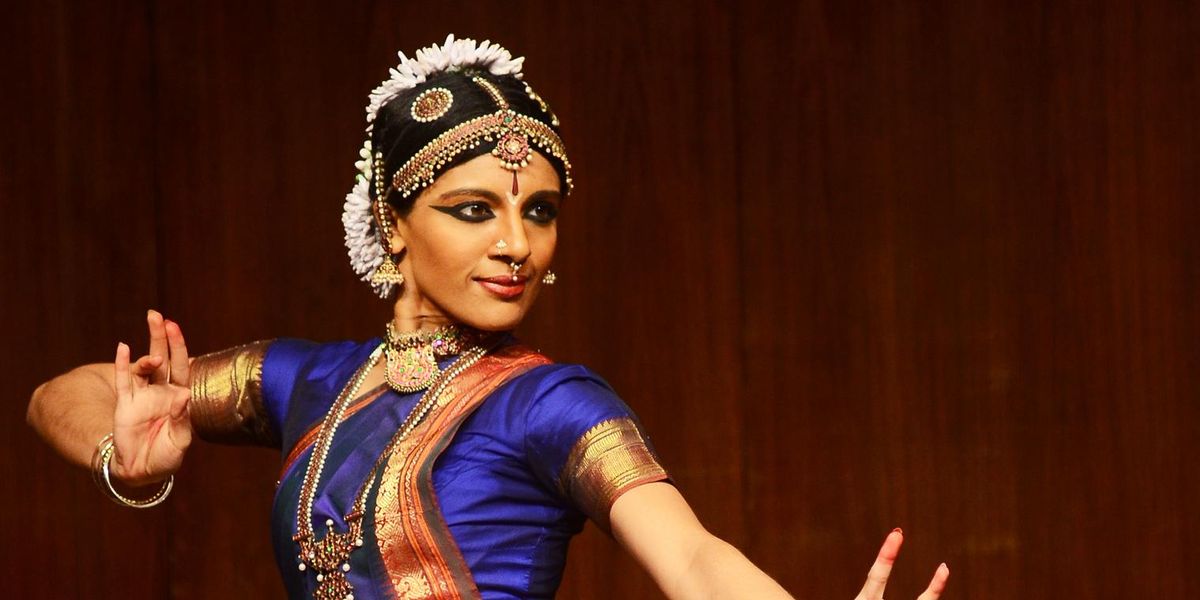How to Infuse Intention and Artistry Into Your Hands
Despite being one of the most-used parts of the body in everyday life, the hands can often be an afterthought in dance. Your dexterous digits, so valuable for writing, driving, texting and general gesticulating, can become limp and lifeless without some mindfulness. Though the role of the hands, wrists and fingers varies depending on your dance form, the necessary intentionality crosses all disciplines.
Think of your hands as part of a larger whole.
“Your fingers are what send the energy out from the body,” says bharatanatyam dancer, choreographer and teacher, and the co-artistic director of Ragamala Dance Company in Minneapolis, Aparna Ramaswamy. “The gestures do not stand alone.” TaraMarie Perri, whose background as a dancer and choreographer feeds her yoga teaching at the Perri Institute for Mind and Body and New York University’s Tisch School of the Arts, recommends focusing on the energy pathways throughout the whole body as oppositional and supportive forces. “Think of the palms as the distal ends of the arms,” she says.To practice this full-bodied integration, find connections between the fingers and other parts of your body. For example, Sandra Chinn, who teaches at Alonzo King LINES Ballet and Berkeley Ballet Theater, tells students to think of the fingers as “picking up” the toes as they initiate a développé.
Bear weight mindfully.
The transition to weight-bearing movements on your hands can be scary if you’re not used to it. Try shifting your perspective by thinking of your hands as feet. “Hands are designed for articulation, gesture and agility. Feet are designed for stability, grounding and balance. As dancers we get to play with it in both ways,” says Perri. “The challenge of going onto the hands is how to find the same thing that I find in my feet.”Additionally, protect your hands and wrists in weight-bearing activities by remaining strong in your core and distributing the weight throughout your body. “The alignment of hands, elbows and shoulders is the way you would think about the ankles, knees and hips,” says Perri.

Throw flexibility out the window.
“You can’t think in terms of flexibility with the hands and wrists,” says Perri, noting that the wrist is not as mobile as the ankle. Wrist joints have a limited set of movements: flexion and extension (like dribbling a basketball) and adduction and abduction (like waving goodbye). Twisting of the wrist happens in the forearm via the radius and the ulna.With that in mind, don’t try to overstretch your fingers or wrists when they’re bearing weight. Perri also recommends being especially mindful of the mobility of the thumb. “If we overly mobilize our thumb we can cause deterioration in the ability of our wrists,” she says. “If we think of the spaces between the fingers as pizza slices when they are flat on the floor supporting weight, we want to keep the slices between the thumb and pointer finger the same as the others.”
Rotate the wrists on an axis.
To maintain a clean, elongated line during port de bras as you move from one position to another, Chinn recommends thinking of the middle finger as the central axis and rotating the hand around it. “In the classical ballet positions, you have to imagine the hands start much higher on the forearms,” she says. “If you don’t take the time to do that, you are going to get a lot of breaking in the wrist. The rotation starts higher.”

Nick Korkos, courtesy Chinn
Take care of your hands.
With the increase in texting and computer use in our everyday lives comes the accompanying side effects of those repetitive motions, especially in the thumb joint. As you go about your day, try to bring some awareness to the alignment of your wrists. For most prolonged activities, like typing, your hands should extend in one long line out from your elbows. Avoid breaking at the wrists. As you integrate any new type of hand or wrist movement into your life, be patient with the process, especially if it’s related to weight bearing. “Hands and wrists take time to get used to weight bearing,” says Perri. “There are exercises you can do to help alleviate the fatigue.”
Communicate clearly.
The many hand gestures in bharatanatyam have different meanings depending on their placement in relation to the rest of the body. A muddled gesture could completely distort the effect of the movement. But even if you’re not performing a genre that denotes specific hand meanings, your hands can speak volumes.Becoming more specific in your hand movements is often just a matter of repetition over time. Ramaswamy suggests staying diligent about the shape of the hands and their position in relation to the rest of your body. Practice more times than you think you’ll need until it’s second-nature, and use emotion to fully bring your hand gestures to life.
Teachers: For tips on refining your students’ hands, wrists and fingers, visit dance-teacher.com.




